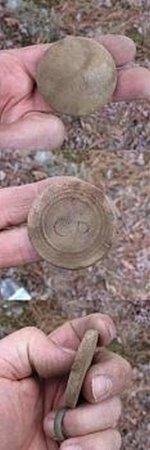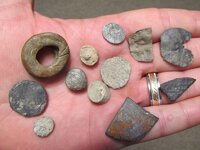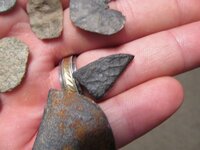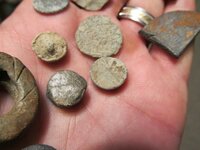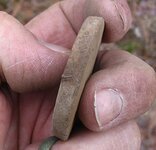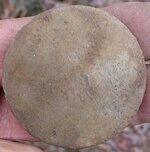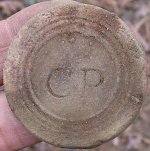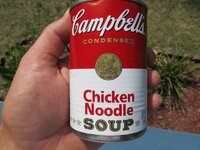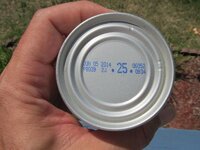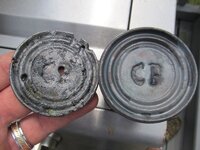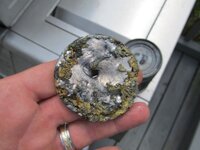Don in SJ
Silver Member
- May 20, 2005
- 4,932
- 837
- Detector(s) used
- MINELAB SE Pro
- Primary Interest:
- All Treasure Hunting
I posted this back in 2007 for my son and could not ever consider it "solved". With SJB's recent find of a no doubt about it 16 th century "trade weight" I thought it best to repost my son's 2007 find for new opinions.
Back in the original post, trade weight was in my opinion the best answer, although a "property marker" was also suggested.
The site found at was occupied from the 1760s to about 1810, it was an old sawmill site and was abandoned around 1810. Most all artifacts and coins found at the site were 1700 era finds. So I am assuming if it was lost by those who worked or lived there it is at least late 1700s or earlier, not later.
My son never got a weight on it, my scale will not go that high and bathroom scales, not too trustworthy, but you can tell by the thickness of it that his relic seems to be in the realm of possibility of being a lead trade weight.
Thoughts? I have no idea what CP would stand for.
Don
Back in the original post, trade weight was in my opinion the best answer, although a "property marker" was also suggested.
The site found at was occupied from the 1760s to about 1810, it was an old sawmill site and was abandoned around 1810. Most all artifacts and coins found at the site were 1700 era finds. So I am assuming if it was lost by those who worked or lived there it is at least late 1700s or earlier, not later.
My son never got a weight on it, my scale will not go that high and bathroom scales, not too trustworthy, but you can tell by the thickness of it that his relic seems to be in the realm of possibility of being a lead trade weight.
Thoughts? I have no idea what CP would stand for.
Don


